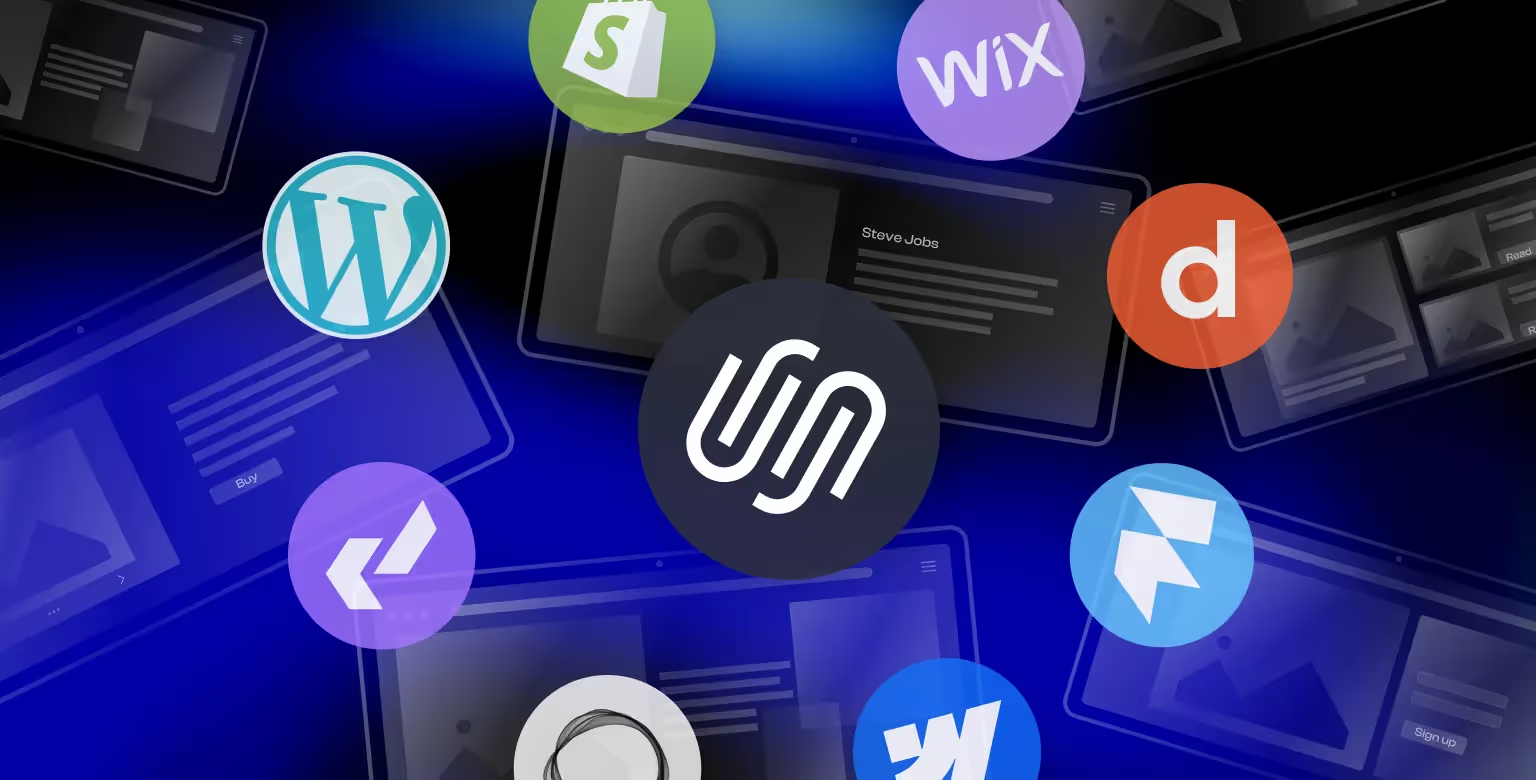Introduction
Squarespace is one of the market leaders in terms of website builders. It is used by a range of clients from businesses, bloggers, to creatives looking for ease-of-use as the main differentiator in the platform of choice.
Despite its popularity, the platform has its own challenges. The users often find themselves searching for Squarespace competitors for the platform's limitations in customization, scalability, and advanced functionality.
So if you're one of those frustrated users, you're not alone. Squarespace's ecosystem is built on templates that are quite rigid. And worst of all, those templates are oftentimes not too SEO friendly, meaning that it's hard to scale your site's visibility.
After realizing those limitations, users are looking to either switch to platforms that offer more design flexibility, better SEO tools, and a tool that is more scalable, or those that offer more custom workflows and a better e-commerce infrastructure.
Don't get us wrong, Squarespace is a great platform. We are trying to point out that each tool has it's use case and if you've outgrown Squarespace’s capabilities, it is normal to look for a more robust platform that can handle higher traffic and content demands as a substitute.
One standout alternative is Webflow. Unlike Squarespace, Webflow provides full creative control, advanced CMS capabilities, and superior performance, making it the go-to choice for professionals. In this guide, we’ll explore the top Squarespace competitors and explain why Webflow takes the top spot.
What to Look for in a Squarespace Competitor
When choosing a website builder, and especially one to replace Squarespace as a competitor, here are key factors to evaluate:
- Design Flexibility – Ability to customize beyond rigid templates.
- Ease of Use – Drag-and-drop simplicity vs. structured editing.
- SEO Capabilities – Built-in SEO tools and advanced customization options.
- Pricing & Scalability – Cost-effective solutions that grow with your business.
- Performance & Speed – Lightweight, fast-loading websites for better user experience.
An ideal alternative to Squarespace should help its users to step away from template based solutions and provide a more granular control over all the website's features.
Clearly, not one company has managed to create an ideal platform (although some are better than the others). Some platforms such as Wix prioritize ease of use and a good template library, while others give the users good customization and scalability features like Divhunt. Depending on business needs, one should choose a platform that is most suited for their needs. For example, if a business relies on organic traffic, it should disregard platforms with poor SEO features, as those directly impact visibility and growth of the brand.
Out of all the competitors, we feel like Webflow checks most of these boxes, offering design freedom, relatively better SEO tools, enterprise-level scalability, and more.
9 Best Squarespace Competitors in 2025
#1 Webflow – The Best Alternative for Design & Control
Webflow is the most powerful Squarespace competitor. It offers full design control, advanced CMS, and little to no template restrictions.
Unlike Squarespace, which relies heavily on rigid templates, Webflow provides complete freedom in terms of design customizations. Webflow does offer quite a few templates in it's template marketplace, however the most attractive features of the tool can be explored by tackling projects from scratch. This makes it a great option for businesses that need a more tailored approach to creating and growing their websites.
Webflow's main selling point is it's CMS feature. It helps the users build content-rich websites. Unlike Squarespace, where dynamic content management is more restricted, Webflow allows users to create structured collections for blogs, portfolios, directories, e-commerce stores and everything in between. This level of flexibility ensures that even the content-heavy websites can introduce a level of novelty at any point in time without too much hassle.
Another powerful feature of Webflow is SEO. It is an area where Webflow surpasses Squarespace by a long shot. Yes, Squarespace provides basic SEO settings, but Webflow offers granular control over everything really. You can add meta tags, schema markup, custom indexing rules, and everything else you can think of. These advanced features help businesses improve search rankings and site visibility more effectively.
We have written a detailed overview of what is Webflow including it's key features, but for the purpose of this article, the main ones we feel like you should know about are:
- Visual development control with a no-code builder.
- Advanced CMS capabilities for content-driven sites.
- SEO tools that offer higher control compared to Squarespace.
- More flexibility to create high-performance, scalable websites.
- Pricing options that cater to businesses of all sizes.
One last thing to note is that with the use of integrations, you can turn your website into a business model — No matter whether you’re running an e-commerce store with the help of Shopify integration, or adding a pay gate to premium content through a Memberstack integration.
Best for: Developers, marketing teams, businesses of varying sizes, and anyone seeking total creative control.
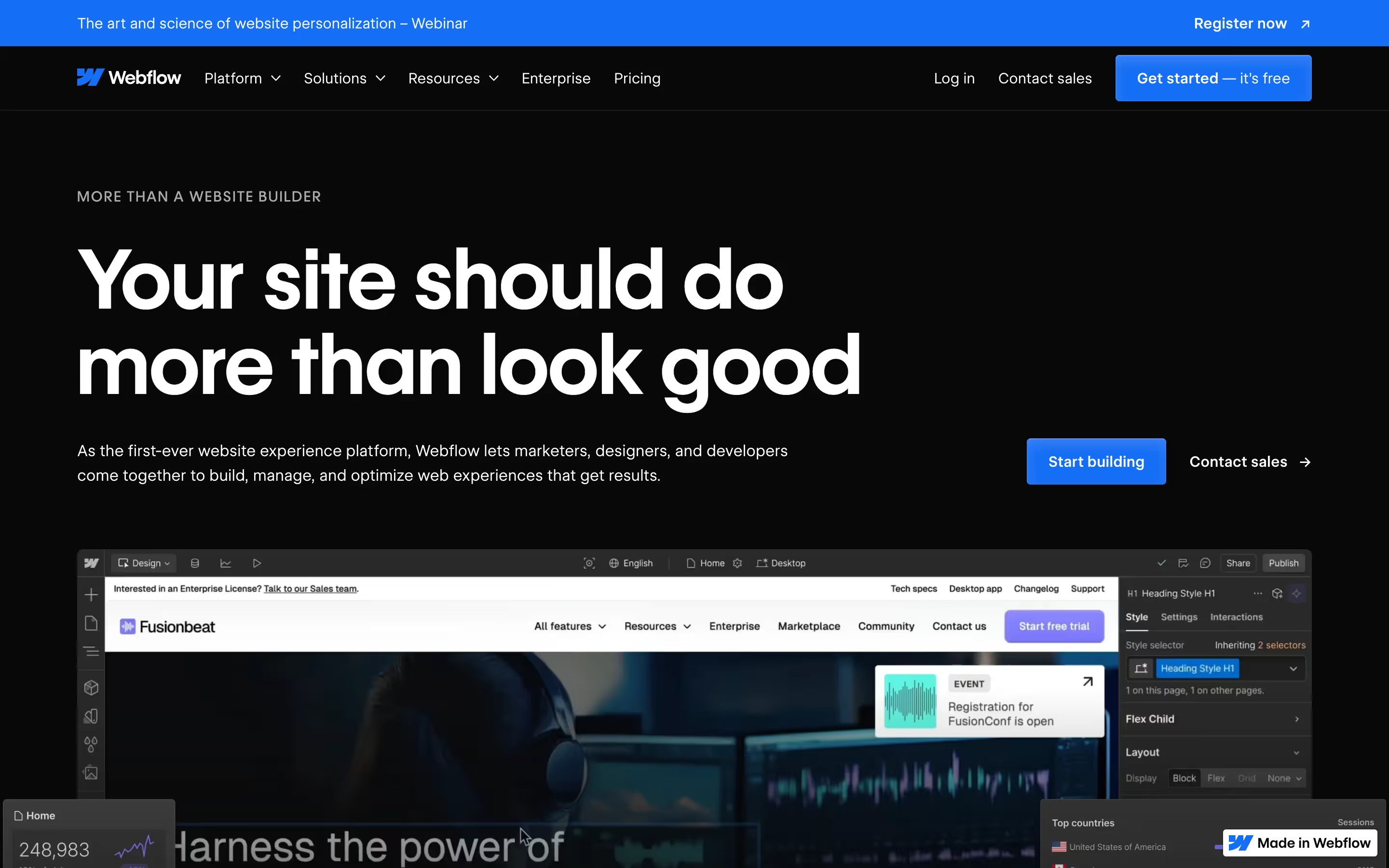
#2 Wix – A User-Friendly Alternative
Wix is one of the most popular competitors to Squarespace, offering an easy drag-and-drop editor. It’s a beginner-friendly platform that allows users to build somewhat functional sites fast with no need for coding.
While this is a strength, this is also a weakness. Its flexibility does surpass Squarespace, but it still lacks the level of design control offered by platforms like Webflow, making it only a marginal improvement. We have written an article comparing Webflow with Wix, so feel free to read through it if you want to learn how those two platforms stand side by side.

Pros:
- Beginner-friendly with hundreds of templates.
- More flexible than Squarespace but lacks Webflow’s design depth.
- Built-in SEO tools, though not as advanced as Webflow.
- App market with third-party integrations, allowing added functionality.
- AI-powered design assistance for quick site generation.
Cons:
- Limited customization options compared to Webflow. To get a better idea on how these 2 platforms compare to each other, read our article on Wix vs Webflow.
- Can feel overwhelming due to the number of features, especially for beginners.
- Performance can be slower compared to more optimized platforms, affecting site speed.
- Not ideal for large-scale websites, as scalability options are limited.
- E-commerce functionality is weaker compared to Shopify or Webflow.
Best for: Small businesses, beginners, and users looking for a quick, hassle-free website setup.
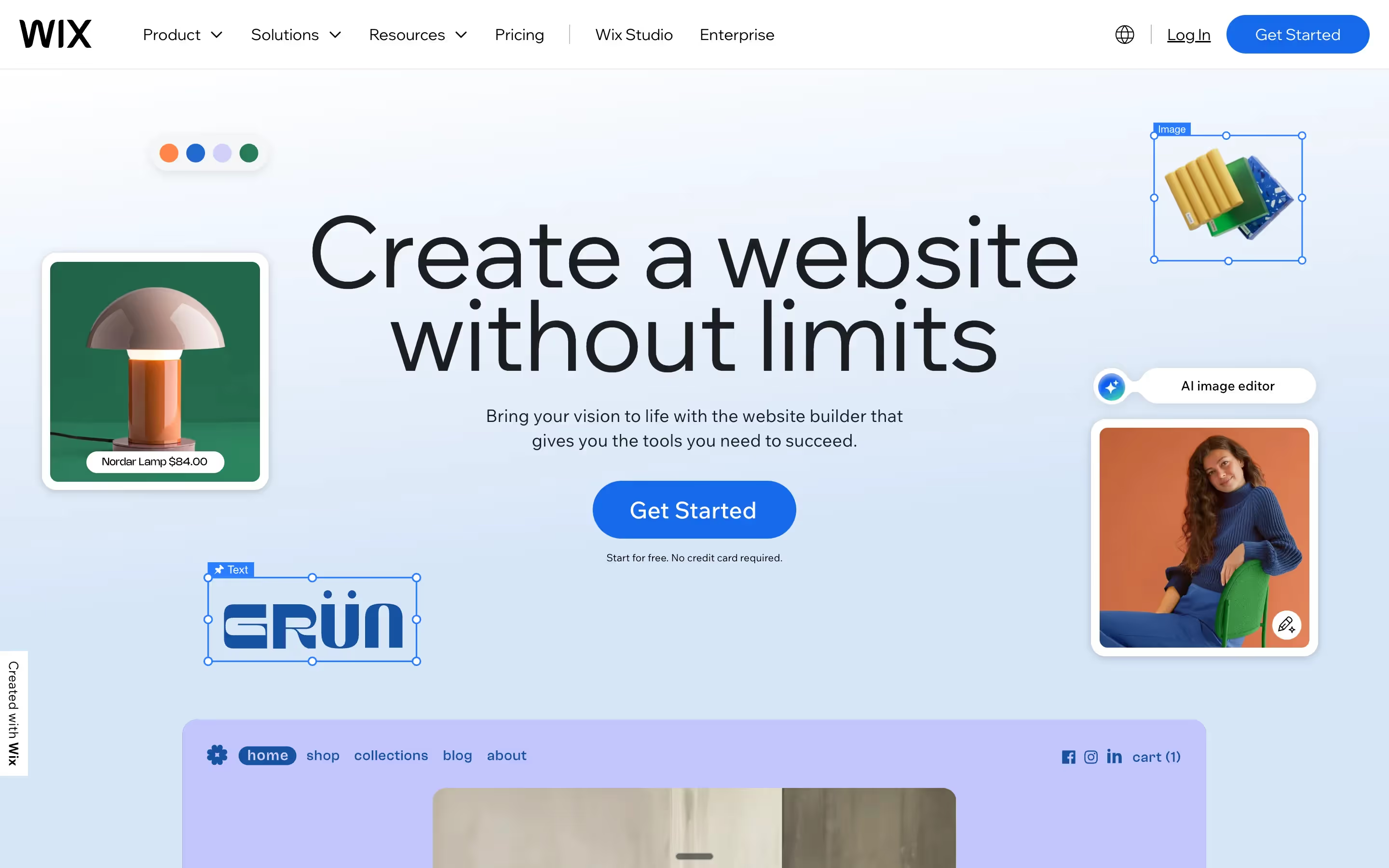
#3 Shopify – Best for E-Commerce
If you need a better Squarespace competitor for online stores, Shopify is probably the best option you can go with. Besides being one of the most commonly used e-commerce platforms, it gives it's users quite a large suite of tools for running your online businesses. Unlike Squarespace, which provides basic e-commerce functionality, Shopify specializes in helping businesses scale their online sales.
With that being said, there are multiple solid competitors when it comes to eCommerce such as Wookomerce and Webflow e-commerce and if you want to see how Shopify fares against the competition, we have written an article where we compare Webflow and Shopify.
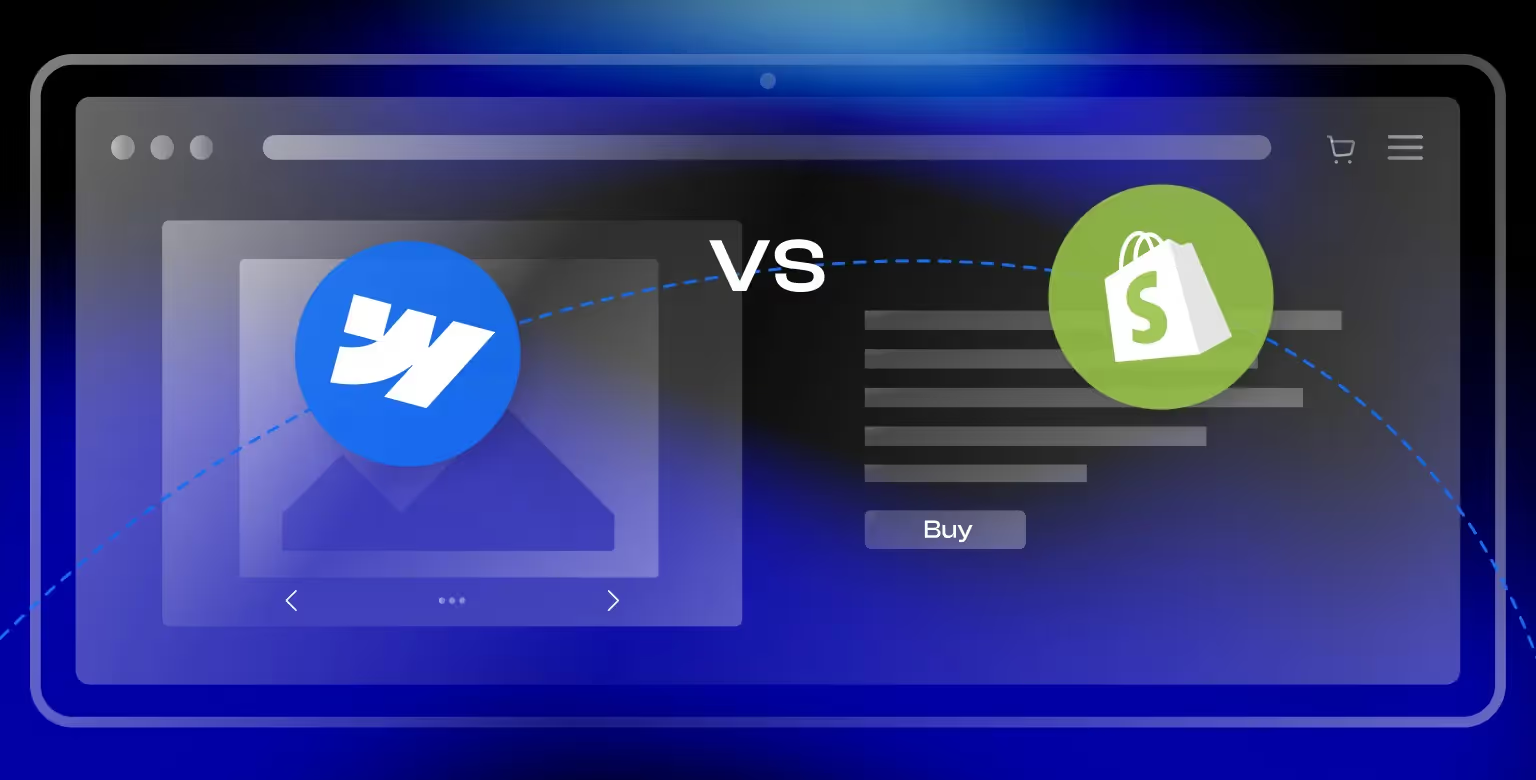
Pros:
- More powerful e-commerce features than Squarespace.
- Scalable, with integrations for dropshipping, payment gateways, and more.
- Easier to manage large inventories than Squarespace.
- Comprehensive analytics and reporting to track sales and customer behavior.
- Large app marketplace for expanding functionality beyond built-in features.
Cons:
- Higher costs compared to Squarespace, especially for advanced features.
- Like squarespace, it is limited in terms of design flexibility without reliance on third-party apps or coding. It is template-rich though.
- Complex setup for beginners, requiring more technical knowledge.
- Transaction fees unless using Shopify’s payment gateway.
- Less customization for content-heavy sites, as it's primarily e-commerce-focused.
Best for: Online stores needing scalability, robust sales tools, and advanced e-commerce integrations.

#4 WordPress – Best for Customization
WordPress is an open-source development platform. It offfers more customization than most developers know what to do with. WordPress is more of a modular platform and not an all-in-one solution. It gives its users a platform that allows them to pick and choose what features they want to include. The flexibility comes from plugins, themes, and integrations that are a part of the WordPress ecopsystem. This also means that not all features are given natively. Users can build anything from a simple blog to a complex e-commerce store, but this freedom comes with added complexity.
The platform is also rich with builders and templates such as elementor, brix, divi, woocommerce, and more. We have written some articles covering comparison between Webflow vs Wordpress, Webflow vs Divi, and Webflow vs Elementor that should give you a better understanding of the Wordpress infrastructure.
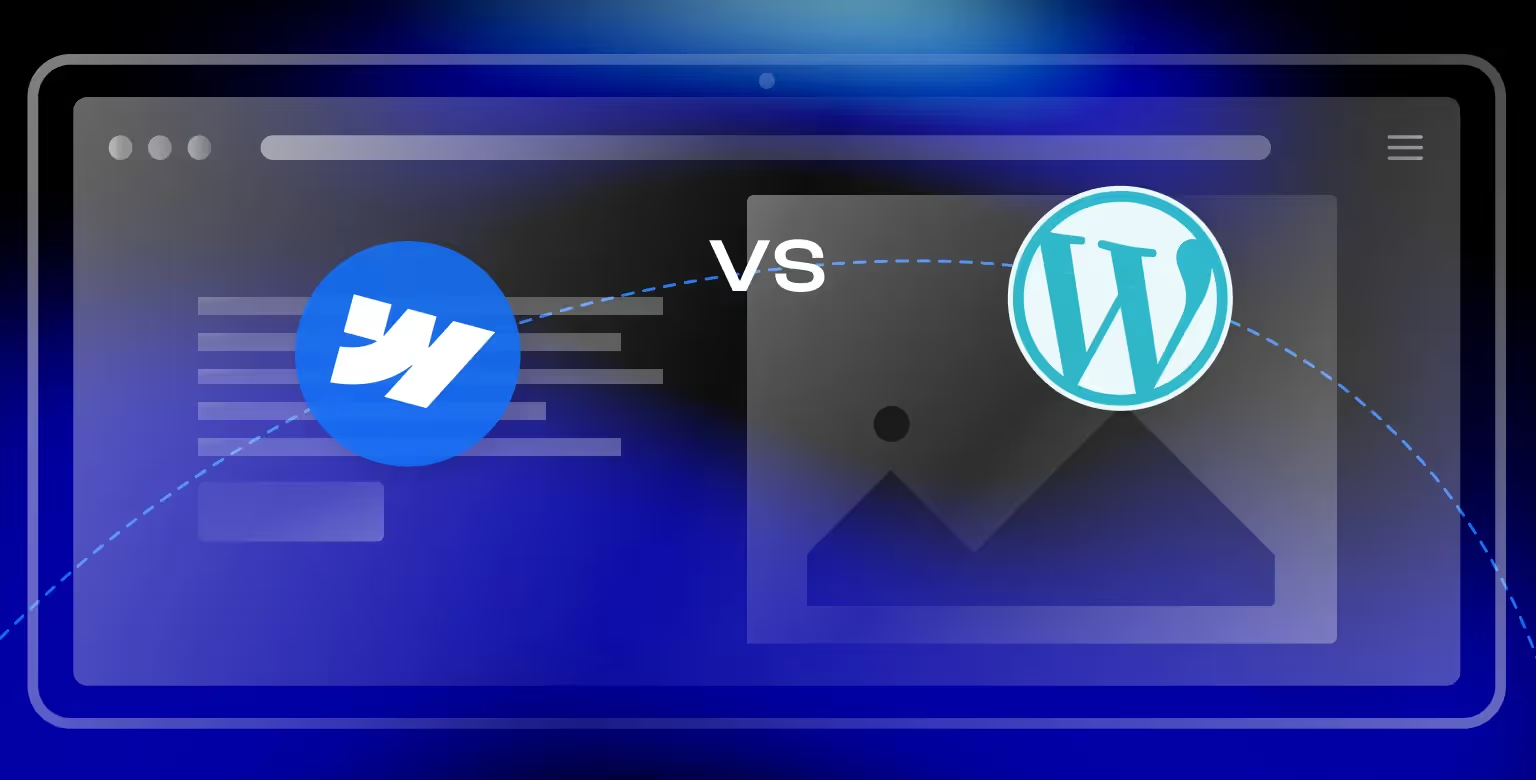
Pros:
- Full control over your website with thousands of plugins.
- More flexible than Squarespace but requires maintenance.
- Extensive plugin ecosystem, enabling advanced functionality.
- Large developer community, offering support and resources.
- Scalable, making it suitable for businesses of all sizes.
Cons:
- Steeper learning curve compared to Squarespace.
- Requires more hands-on management for updates and security.
- Performance depends on hosting choices and plugin optimization.
- Security risks if not properly managed, as outdated plugins can create vulnerabilities.
- Can become costly, depending on hosting, premium themes, and plugin subscriptions.
Best for: Those comfortable with self-hosting, customization, and ongoing website management.
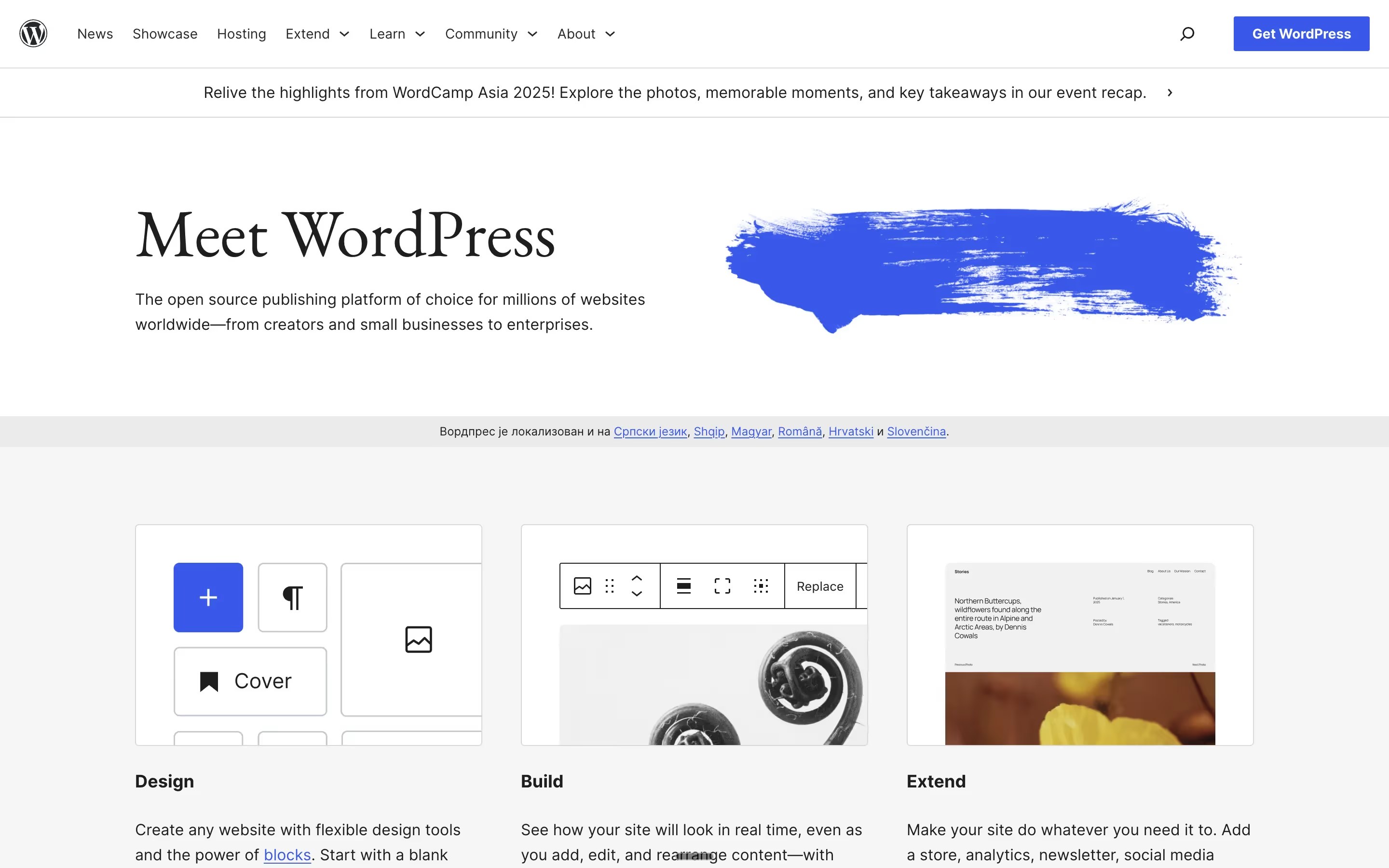
#5 Weebly – A Budget-Friendly Alternative
Weebly is ideal if you want to build a website quickly and don't have technical know-how or engineering resources. The other side of the same coin is that it does not give customization options one would expect from a development platform. This shortcoming is mitigated by Weebly's pricing point. It is affordable.
Pros:
- Easy to use drag-and-drop capability.
- Lower pricing than Squarespace and Webflow.
- Great for simple sites.
- Templates marketplace helping with fast site delivery.
- Built-in e-commerce features, making it a budget-friendly alternative for small online stores.
Cons:
- Limited customization compared to Webflow or WordPress.
- Lacks advanced SEO and marketing tools, making it less ideal for scaling businesses.
- Fewer integrations and add-ons compared to other platforms.
- Little flexibility for developers, restricting code-level modifications.
- Performance can suffer under high traffic compared to more robust platforms.
Best for: Personal sites, bloggers, and small businesses looking for an affordable, user-friendly website builder.
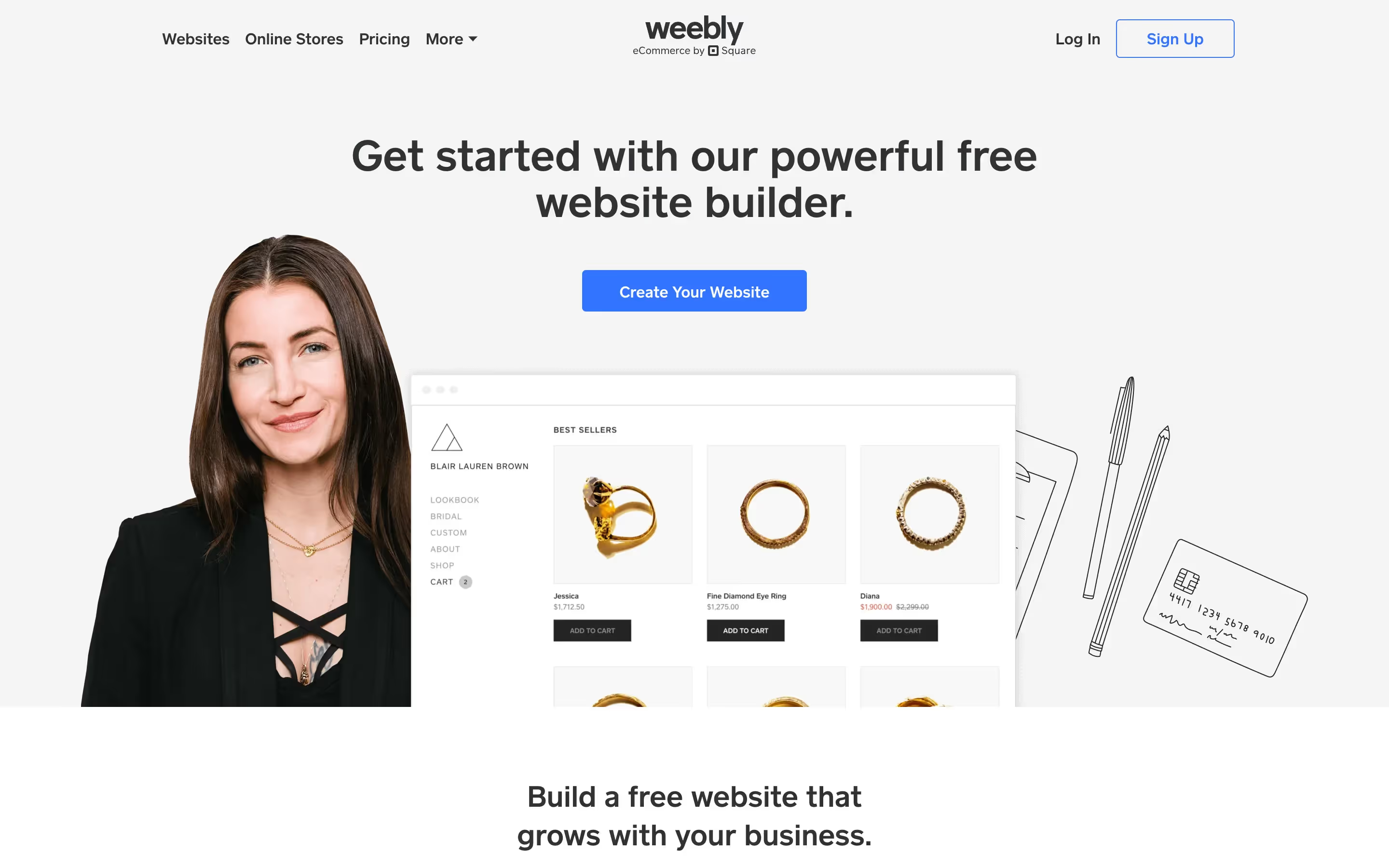
#6 Ghost – Best for Bloggers
Ghost is built for content creators. While Squarespace has some design features, Ghost is the bare bones of a platform primarily focused on blogging. It gives its users a distraction-free writing experience emphasizing performance and SEO. In other words, it is a great choice for independent publishers and media outlets.
Pros:
- SEO-friendly and designed for blogging.
- Faster and leaner than Squarespace.
- Lacks the broader site-building tools of Squarespace.
- Lightweight and optimized for speed, making it ideal for content-heavy sites.
- Subscription and membership features, allowing writers to monetize their content.
Cons:
- Limited customization options compared to platforms like Webflow or WordPress.
- Not ideal for multi-purpose websites beyond blogging.
- Fewer integrations and third-party tools compared to Squarespace.
- No built-in e-commerce functionality, requiring external integrations.
- Steeper learning curve compared to all-in-one website builders.
Best for: Bloggers, publishers, and content-focused businesses looking for a fast and SEO-optimized publishing platform.

#7 Duda – Best for Agencies
Duda is a somewhat of a niche builder made for agencies handling multiple clients with simple design requests. It's main selling point is the white-labeling capabilities, allowing agencies to rebrand the platform as their own. Duda also provides some automation features helping clients streamline workflows aimed at client management.
Pros:
- White-label options for agencies.
- Strong automation and client management features.
- More agency-focused than Squarespace.
- Built-in client collaboration tools, allowing real-time edits and approvals.
- Pre-made templates optimized for various industries, saving time on design.
Cons:
- Limited design flexibility compared to Webflow or WordPress.
- Higher pricing than some DIY builders, making it less accessible for freelancers.
- Not suited for beginners; made for agencies.
- Limited third-party integrations, restricting customization for more complex projects.
- Poor choice for content-heavy websites - the CMS is not as advanced as Webflow’s.
Best for: Digital marketing agencies that need an efficient, scalable platform with built in automations and white-label solutions.
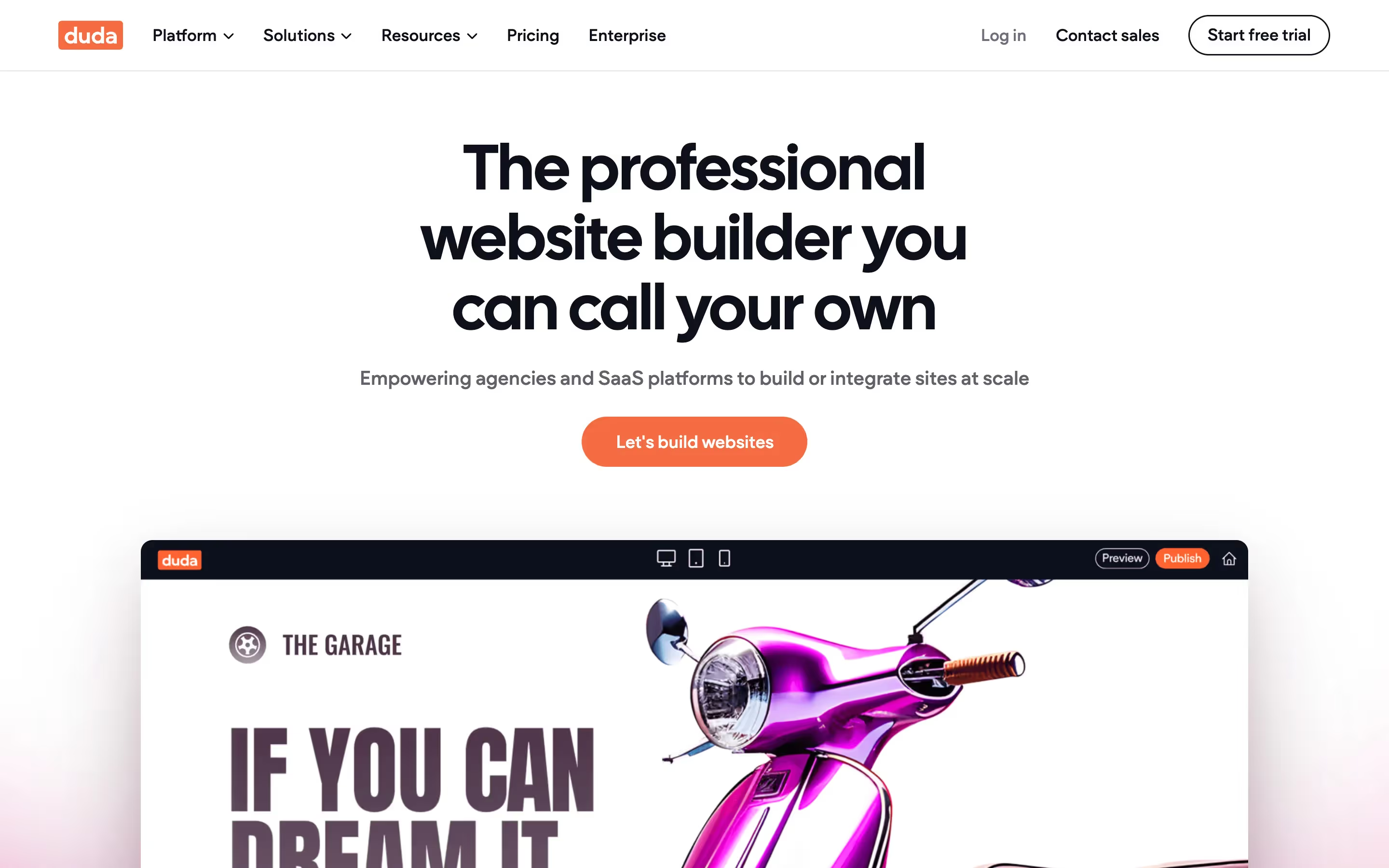
#8 Divhunt – The No-Code Builder for Speed & Performance
Divhunt is a fast, lightweight website builder that removes limits and gives users full control over their designs. Unlike Squarespace, which relies on templates and makes custom changes difficult (often requiring a developer), Divhunt lets you build freely without coding.It’s designed to be scalable, meaning you can start small and grow without running into performance issues.
Whether you’re making a simple website or a complex project, Divhunt keeps everything running smoothly. If you want to learn more about the platform, we have written an article comparing Divhunt and Webflow.
Pros:
- Fast and SEO-friendly: Pages load quickly, which helps with search rankings.
- No design limits: Build exactly what you want without restrictions.
- Custom development support: Add your own code if needed.
- Easy for beginners, powerful for developers: No coding required, but developers can extend functionality.
- Scales with your business: Handles large projects without slowing down.
Cons:
- Smaller ecosystem: Fewer templates and plugins than WordPress or Webflow.
- Limited third-party integrations: Not as many built-in tools as some other platforms.
- Smaller community: Fewer tutorials and resources available.
- More setup time: Fewer ready-made templates, so you’ll need to build more from scratch.
Best for: Developers, marketers, small businesses, and anyone who wants a high-performance website without limits.
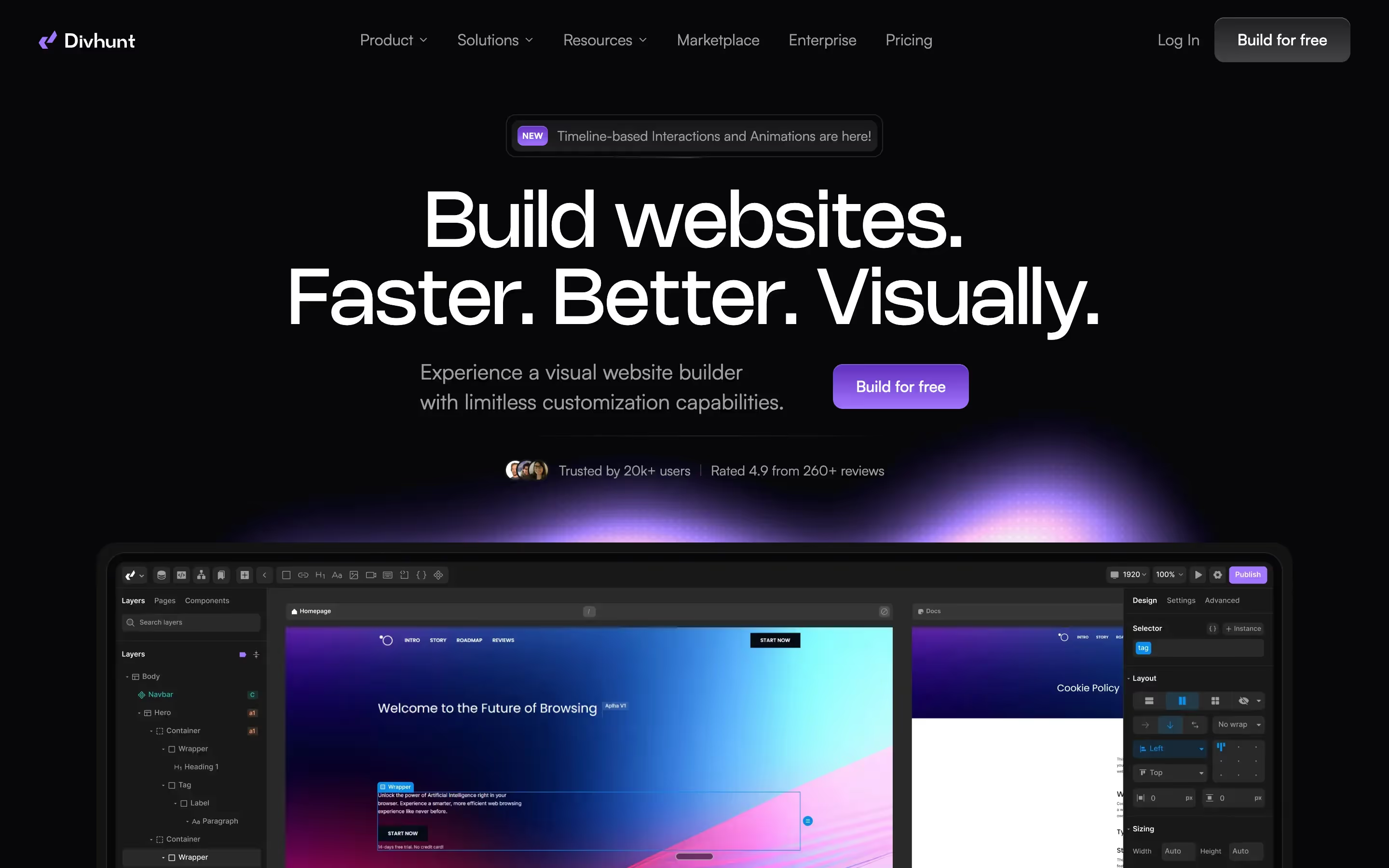
#9 Framer – The Designer’s Favorite for Landing Pages
Framer is a sleek Squarespace alternative focused on interactive designs. Unlike the large majority of website builders, Framer focuses on creating an infrastructure for designers, not developers. It introduced simplified motion production, animations, and micro-interactions. Over the last year, it has become a top choice for designers looking to bring their ideas to life.
If you see Framer, you'd confuse it with Figma, especially after Figma Config 2025. That's because Framer focused on creating it's interface in a familiar manner. It allows users to visually develop interactive websites with little to no coding required. Framer’s biggest selling point is the ability to handle complex animations with smooth transitions with no code. This is something other development platforms struggle with. Additionally, Framer integrates well with design tools, allowing for seamless prototyping and implementation.
With that being said, as it is a platform for designers, it has it's own set of limitations such as terrible experience when it comes to forms and code base. We have written a detailed article comparing Framer and Webflow for those who want a better understanding of the platforms.
Pros:
- Figma-like editing for high-quality visuals.
- Great for landing pages and marketing sites.
- More interactive design options than Squarespace.
- Seamless animations and transitions, perfect for engaging user experiences.
- Strong integration with design tools, making collaboration easy for teams.
Cons:
- Limited CMS capabilities, making it less ideal for content-heavy sites.
- Not as scalable as platforms like Webflow or WordPress.
- Uses React for site rendering, making maintenance more complex compared to traditional website builders.
- Limited third-party integrations, restricting customization.
- Primarily suited for designers, rather than general business users.
Best for: Companies that don’t have extensive website needs but would settle for a small and stunning website, as well as designers and marketers looking for modern, visually engaging websites with strong animation capabilities.
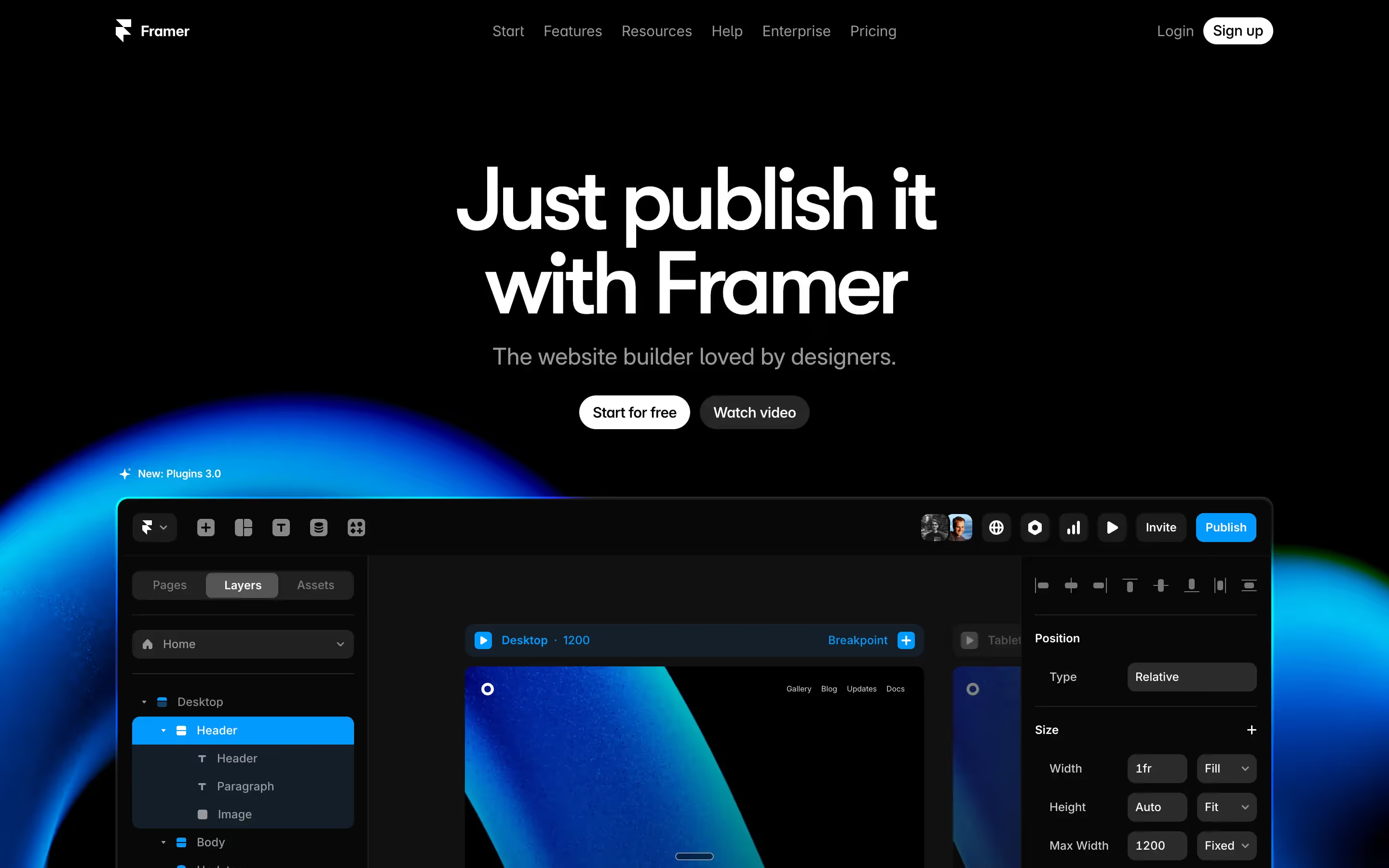
Why Webflow is the Best Squarespace Competitor
Webflow outshines Squarespace and other competitors with:
- Total creative freedom with no template limitations.
- Better SEO tools for higher search rankings.
- Scalability for businesses of all sizes.
- A case study of a business that switched from Squarespace to Webflow.
Squarespace is a great, beginner-friendly tool that will get the job done. Still, it limits users to a simple, template-based approach to website creation. Webflow's tools, on the other hand empowers businesses to build a custom solution tailored for growth.
An example of such tools would be the granular SEO settings Webflow provides, helping your site rank better in search engines. Wen it's paired together with its CMS features, the Webflow made websites become ideal for content-heavy businesses.
Conclusion & Next Steps
If you’re looking for a better Squarespace competitor, Webflow offers all you could think of in terms of design flexibility, performance, and SEO tools.
Webflow is our tool of choice, and if you're bought, we invite you to explore the services our Webflow development agency can offer for any professional help. Still, if your goal is creating and optimizing standalone campaign landing pages rather than a full website, exploring dedicated Unbounce alternatives might be a smarter move for maximizing conversions.


